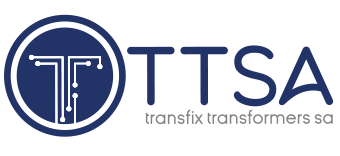State-owned utility Eskom has welcomed S&P Global Ratings’ decision to upgrade the company’s foreign and local currency long-term credit ratings from B to B+, with a stable outlook. The upgrade also applies to Eskom’s senior secured and unsecured debt, while government-guaranteed foreign currency debt was raised from BB- to BB+. Eskom’s national scale rating improved from zaBBB+/zaA-2 to zaAV/zaA-1.
Posts
Brazil’s COP30 presidency pushed through a compromise climate deal on Saturday that would boost finance for poor nations coping with global warming but that omitted any mention of the fossil fuels driving it. In securing the accord, Brazil hoped to demonstrate global unity in addressing climate change impacts even after the world’s biggest historic emitter, the United States, declined to send an official delegation.
Eskom has identified 14 municipalities for the implementation of five-year Distribution Agency Agreements (DAAs), a controversial mechanism for dealing with arrear debt owed to the utility that now has Cabinet approval. Acting group executive for distribution Agnes Mlambo confirmed in a briefing to lawmakers that the arrear debt owed to Eskom currently stood at R105-billion, with the 14 municipalities representing 58% of this outstanding debt.
Engineering News editor Terence Creamer discusses the growing problem of municipal arrear debt owed to Eskom; the support Eskom has received for its Distribution Agency Agreement (DAA) mechanism to tackle this problem; and what is likely to happen next.
Unlocking Africa’s resources potential requires infrastructure development and this should be pursued collaboratively, Electricity and Energy Minister Dr Kgosientsho Ramokgopa said on the second day of the Business 20 (B20) Summit, in Sandton, on November 19. The B20 South Africa 2025 Summit is being held for the first time in Africa, as part of South Africa’s G20 presidency.
Eskom has welcomed Finance Minister Enoch Godongwana’s formal endorsement of the Distribution Agency Agreement (DAA) intervention for addressing municipal arrear debt, which had climbed to R105-billion as of the end of September. CEO Dan Marokane told the Parliamentary Portfolio Committee on Electricity and Energy that the DAA was but an interim solution to halting the steep climb in outstanding payments and would have to be followed up by a “fundamental restructuring” of the distribution sector to make it viable.
Chinese solar and storage solutions manufacturer Sungrow has launched new models of commercial and industrial (C&I) battery energy storage systems (BESS), which improve on their predecessor models, in the South African market. The new ST255 and ST510 systems are designed for larger alternating current (ac) and direct current (dc) C&I applications with grid-forming technology that can ensure stable and secure power supply.
Independent African power company Globeleq has appointed Stefan van Niekerk as its new MD of construction, effective November 1. With more than two decades of experience in the African power sector, he is said to bring a wealth of expertise in renewable energy development, construction and operations to his new role.
China’s state-owned Power Construction Corp (PowerChina) is aiming for significant growth in Africa, focusing on renewable energy projects as part of its overseas expansion strategy, a company executive said. Chinese lending to African governments has fallen sharply from a 2016 peak of about $28-billion a year as Beijing grows more cautious about debt risk, but state-backed companies such as PowerChina are still pushing ahead with new projects, increasingly in renewable energy rather than coal.
The National Energy Regulator of South Africa (Nersa) has initiated the review process for municipal tariff applications for the 2026/27 financial year, which begins on July 1 2026, setting a submission deadline of December 12 for licensed municipalities and private electricity distributors. Nersa said public consultation processes would be undertaken in November and December to meet the March 15, 2026 deadline for approving municipal tariffs as required by the Municipal Finance Management Act.
INDUSTRY NEWS
- NERSA appoints Electricity Market Advisory Forum to guide power-market reformDecember 19, 2025 - 2:04 pm
- Eskom offers more details on envisaged roles of the NTCSA and the TSODecember 18, 2025 - 11:04 am
- NTCSA says any electricity deal to salvage Mozal must ensure its financial sustainabilityDecember 17, 2025 - 3:01 pm
WHERE TO FIND US
Address
9 Yellow Street
Botshabelo Industrial Area
Botshabelo, Free State
Call / Email Us
Tel: +27 (0) 61 956 6772
Email: info@transfix.co.za
